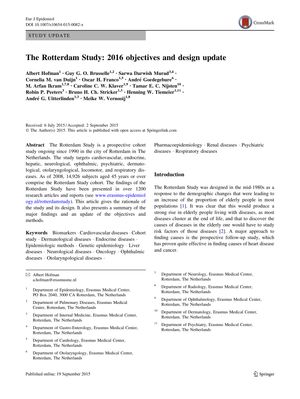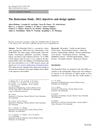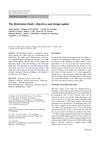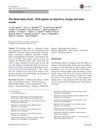The Rotterdam Study: 2016 Objectives and Design Update
August 2015
in “
European Journal of Epidemiology
”

TLDR The Rotterdam Study found risk factors for elderly diseases, links between lifestyle and genetics with health conditions, and aimed to explore new areas like DNA methylation and sensory input effects on brain function.
The Rotterdam Study, as of 2015, was a comprehensive prospective cohort study that had enrolled 14,926 participants aged 45 or older to investigate the etiology and risk factors of diseases prevalent in the elderly. The study had produced significant findings in various health domains, including cardiovascular diseases, where it identified risk factors such as inflammation, resting heart rate, and generalized atherosclerosis, and developed a prediction model for atrial fibrillation. It also explored the impact of lifestyle and nutrition on cardiovascular health. Genetic research within the study identified loci related to cardiovascular traits and conditions, and novel biomarkers and non-invasive measures were associated with coronary heart disease risk.
The study expanded its objectives to include DNA methylation profiling, non-invasive atherosclerosis measures, and collection of nutritional and physical activity data. Dermatological research found a high prevalence of actinic keratosis and a link between baldness and actinic keratosis, as well as genetic variants related to skin color and pigmentation. The study also provided insights into endocrine and locomotor diseases, highlighting the connection between osteoarthritis and cardiovascular disease.
Neurological disease research within the study indicated that dementia and stroke incidence had decreased since the 1990s, but the absolute numbers were expected to rise due to an aging population. Approximately 30% of dementia cases could potentially be prevented by addressing known risk factors. The study also found that a high intake of lutein/zeaxanthin and fish significantly reduced the risk of age-related macular degeneration in individuals with a high genetic risk.
In psychiatric disorders, the study reported incidence and recurrence rates for depressive syndromes and found small vessel disease linked to the onset of depression. Anxiety disorders were less commonly comorbid with depression than previously believed. The study also examined respiratory diseases, particularly COPD, and found associations with cerebrovascular damage.
The study found a link between COPD and an increased risk of cardiovascular diseases, including sudden cardiac death, and observed a higher prevalence of frailty in COPD patients. Genomics and biomarker research contributed to global consortia, and the study detailed its bio-banking and data management processes.
Whole exome sequencing and RNA sequencing were utilized to analyze genetic variants and investigate the relationship between genetics, transcriptomics, and epigenetics. The study also examined the human microbiome and conducted pharmacogenomic research on statins.
The study found that statin use was associated with a decrease in testosterone levels and identified genetic factors in drug-induced rhythm disorders. Imaging studies aimed to identify early biomarkers of brain and cardiovascular diseases, and advancements in pharmacogenomics, proteomics, and metabolomics were discussed.
The study revealed that microbleeds in the brain have location-specific causes and risk factors, and that atherosclerotic calcifications correlate with cognitive decline. Genetic factors were implicated in atherosclerosis, and intracranial atherosclerosis was identified as a significant cause of stroke in white populations.
Finally, the study aimed to explore the effects of diminished sensory input on brain function in the elderly, focusing on hearing and vestibular function. Preliminary analysis indicated that over 50% of participants experienced hearing loss, with a higher occurrence in men and a strong correlation with age.


